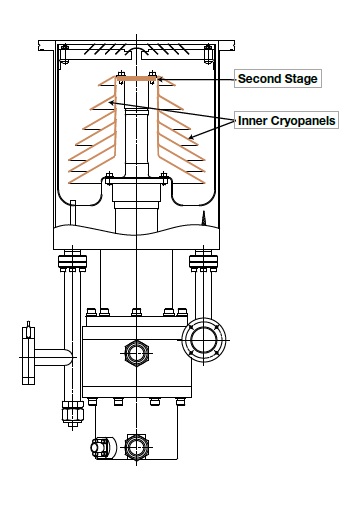The second, or cold stage, of the refrigerator, shown at left, usually operates between 10-20 K and is used to cool the inner cryopanels. Gases such as nitrogen, oxygen and argon will freeze onto these panels. Lastly, any gases that have not yet frozen onto a panel will be adsorbed (a process known as cryosorption) into charcoal, which is located on the underside of the second stage cryopanel.
A cryopump will accumulate large amounts of solid water, air, argon, nitrogen, and oxygen before it has to be defrosted, as illustrated at right. Pumping speeds decrease very little while these thick layers of cryodeposits are built up, and the refrigerator’s temperature changes very little. Typically, water can be allowed to accumulate on the louver until approximately half of the louver is blocked. Solid nitrogen and argon can accumulate in layers that are several centimeters thick on the outside of the cold panel. Typically, the thickness is only limited by their coming into contact with a warmer surface. The rated amount of hydrogen that can be adsorbed is usually based on the assumption that the accumulated hydrogen will result
The major types of Heat Exchanger equipment are:
Shell and Tube type
Finned tube type
Bare tube type
Plate and frame type.
Spiral type
Plate Coil type
Need Help




